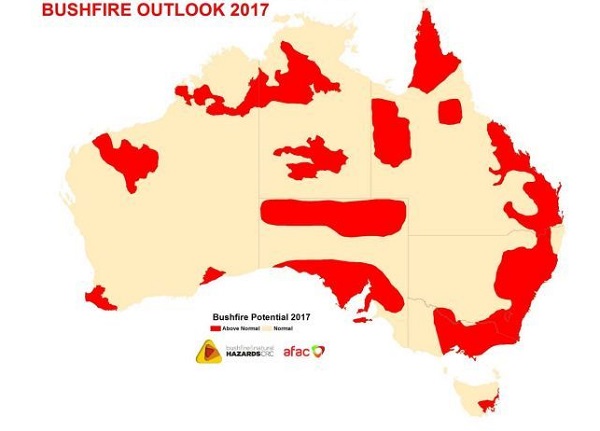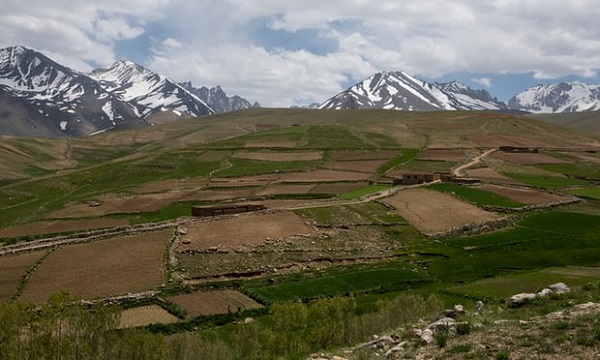1. Australia has experienced its hottest winter on record
From the Climate Council – Worsening climate change melts winter heat records:
-
The Bureau of Meteorology (BOM) today released its seasonal update confirming Australia has seen the hottest (for mean maximum temperatures) and one of the driest winters on record, with temperatures reaching almost 2 degrees Celsius above average.
Climate Council CEO Amanda McKenzie said the hottest winter in history was very concerning, given 2017’s string of broken climate records including the warmest July (mean maximum temperatures).
The BOM update revealed more than 190 records were broken for the lowest amount of rainfall in June, while 72 highest daily maximum temperature records were smashed during July across the nation, 35 in New South Wales alone.
While Queensland, Western Australia and the Northern Territory all experienced their highest mean maximum temperatures on record this winter.
The neatest summary was at Sky News Weather Blog. Seems Adelaide was the place that had near-normal weather. People in Canberra froze in the mornings, with minimums averaging below -1°C.
The BOM of course has much more detail.
BOM’s climate outlook has the El Niño–Southern Oscillation (ENSO) and the Indian Ocean Dipole (IOD) in neutral, which probably means that the weather will be close to the new normal, whatever that is.
The fire season is looking ugly:

2. “Ice battery” air-con technology set to cool Australian homes
California-based Ice Energy has made Melbourne-based company Apricus the exclusive distributor of all its thermal energy storage products in Australia, covering all market segments, including utilities, commercial and industrial, and residential.
-
The company is best-known for its commercial and industrial Ice Bear technology, which works alongside air conditioning units by freezing water at off-peak periods, or when excess solar or wind power is available, and using the “ice battery” to provide power-free cooling during on-peak periods.
More recently, however, the company has been attracting attention for the creation of its “Ice Cub,” a smaller-scale version of the Ice Bear, that is targeting the potentially huge residential market.
Unlike the Ice Bear, the Ice Cub is a kind of all-in-one, hybrid battery/air-con unit, that replaces the conventional home air conditioner.
But unlike conventional air-conditioners, the Ice Cub has the ability to fill an insulated tank with ice in four hours, store it, and then, on command, switch from conventional AC to using the ice to cool the house for at least three hours, instead of electricity.
Seems to me these products are a realisation of what John Davidson wrote in Energy Storage Using Phase Change Materials, which is the most viewed post ever written for Climate Plus. At time of writing it had attracted 711 views.
3. How climate change is a ‘death sentence’ in Afghanistan’s highlands
Afghanistan has around 33,320,000 people, and I’ve often wondered how they feed themselves, given the dust, desert and mountains we see on our TV screens and given that they grow the world’s largest share of poppies, and not for the pretty flowers. Seems they do have upland valleys, growing crops such as wheat and potatoes:

Climate change affects them because meltwater comes before they need it, and rainfall is more erratic, with droughts and flooding rains. Much aid goes to short-term projects that don’t build resilience.
UNEP says:
- about 80% of conflicts in Afghanistan are related to resources like land and water – and to food insecurity, an immediate consequence of global warming.
We are also told that insufficient care is taken of the environment. Apparently Afghanistan is one of the most biodiverse countries in the world with about 3,000 endemic plants, almost four times more than Europe.
4. IPA staffers publish ‘junk science’ on climate change
Graham Readfearn at Planet Oz often runs the ruler over claims made by climate denialists. This time two people who were staffers at the Institute of Public Affairs, John Abbot and Jennifer Marohasy, managed to get a paper published The application of machine learning for evaluating anthropogenic versus natural climate change.
Readfearn took a look and sought the opinions of five real scientists. Seems Abbot and Marohasy selected six proxy temperature records out of a possible 692 without saying why, undertook invalid data manipulation, managed to lose the last 35 years, and came to the conclusion that doubling CO2 would only produce “an Equilibrium Climate Sensitivity (ECS) of approximately 0.6°C.” So we are half way to doubling CO2, and temperature rise, if you go by the measured record rather than proxies, is already 1.2°C.
Of course, they would say it’s a massive conspiracy, where thousands of climate scientists conclude to keep us in the dark, as it were, so that the grant money will continue to flow.
If you read through Readfearn’s post their effort is a good deal worse than my summary above – a complete abomination, and should be withdrawn.
Marohasy and Abbot list their affiliations as the IPA and the Climate Modelling Laboratory, the latter being a trading name linked to Marohasy’s personal business number. Abbot claims an affiliation with James Cook University, but seems he left there before the paper was published.


The ice box may offer a low capital cost way of storing cold but it is not very efficient compared with systems based on phase change materials that have a phase change at temperatures not very far below the target temperature. If a heat pump is used the energy required is proportional to the difference in outside and storage temperature.
In addition there are many parts of Australia where the nighttime temperature is low enough to drive the cold storage phase change.